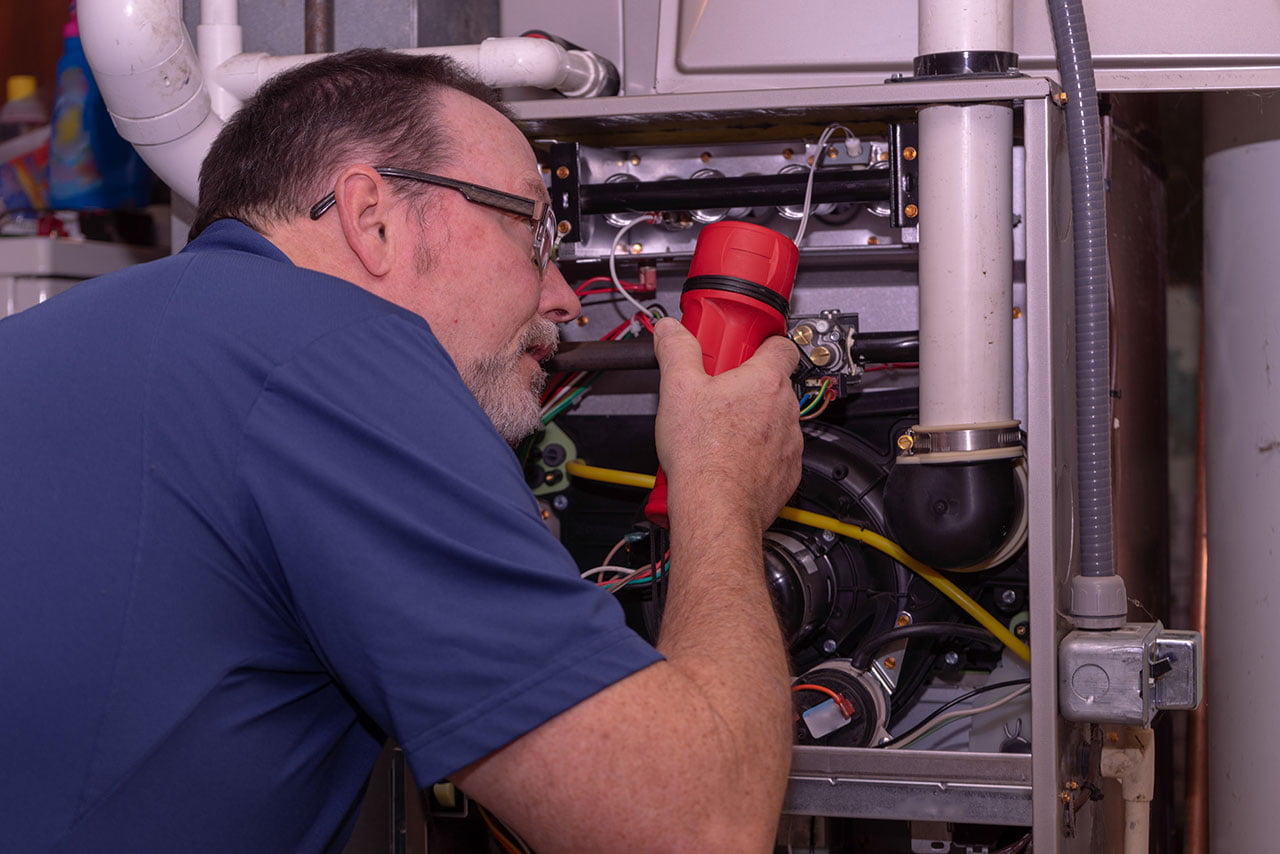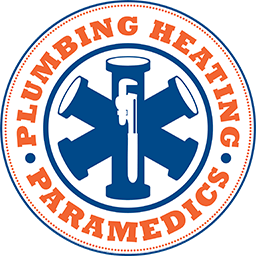
Ever since we’ve adapted to live in colder climates, we have looked for efficient ways to stay warm. This isn’t anything new. From building fires in caves to ancient Romans circulating warm air under their floors, adding fireplaces, and more – we have constantly strived to find the easiest way to heat our homes. Nowadays, most places rely on a more modern and efficient heating system: the furnace. Continue reading for more on the furnace heat exchanger explained
As fall departs and winter approaches, we exchange our shorts for pants, our t-shirts for sweaters, and our sandals for boots. We begin keeping our windows shut, and despite holding off for as long as we can, we eventually give in and start turning the thermostat up.
We know that when we pump up the thermostat, the heat kicks on, and warm air quickly begins circulating the house. We know that that little dial is connected to the furnace, somehow, but very rarely do we think about how our heating system works. This seasonal transition is an excellent time to learn more about how the furnace operates and the red flags for your heat exchanger.
The Furnace
Modern furnaces work similarly to each other. A fuel source ignites, and the flame heats the air. The air is then pushed around ducts and into rooms of your house. However, some potentially harmful chemicals are released when the fuel burns. Wait – have you been inhaling toxic chemicals all along?
Don’t worry – that’s where the heat exchanger comes in. It’s an integral part of your furnace that ensures these chemicals don’t get circulated throughout your home.
The Heat Exchanger
Any time you burn a carbon-based fuel source like coal, oil, or natural gas, you release gasses as a by-product of the combustion. Some of these by-products, like carbon monoxide, can be extremely harmful, especially to young children, the elderly, and anyone with respiratory issues. The heat exchanger exists to prevent these gasses from entering the air you breathe in your home.
Your furnace has two incoming air vents. One vent is for the clean air that is heated and moved throughout your ducts and into the rooms of your house. The other brings in the oxygen needed for the combustion process. This air mixes with the fuel source and is then burned.
The air becomes extremely hot, which is good, but it has those harmful chemicals in it, which is very bad. The heat exchanger is a compartment that allows heat transfer from the flame to the clean air and keeps the dangerous air separate, eventually pumping it outside your home.
The heat exchanger walls are made of very thin metal, usually copper or aluminum. These particular metals allow for an efficient transfer of heat. The metal walls are heated quickly by the combustion process and the hot air moving through them. The clean air travels over the metal, absorbing the heat, and then is pushed into the ducts of your house.
A Heat exchanger can have a few different forms. Sometimes it is shaped like a round tube in a coil, or it could consist of several metal sheets in a fin-type structure. The goal is to allow for the most contact between the air and the metal surfaces. Some energy-efficient furnaces even have two heat exchangers. The hot air moves to a second compartment to transfer as much heat as possible before it leaves the house.
Signs You Need a Furnace Repair
The thinness of the metal used in the exchanger’s walls is necessary for the ideal transfer of heat. However, heating the thin metal walls and then cooling them causes the metal to expand and contract, which could eventually lead to cracks or warping.
If there are cracks in the heat exchanger, carbon monoxide and other harmful gasses could escape into the clean air circulating around your house. Many homes have carbon monoxide detectors, but it is best to try and avoid the gasses escaping in the first place.
It is necessary to periodically inspect the heat exchanger for any issues that may have appeared since its last use.
Some of the warning signs that there might be an issue are:
- A strange smell coming from the furnace area or through the vents in your home
- The furnace is making weird noises
- Corrosion on the surface walls of the heat exchanger or other parts of the furnace
- Cracks in the metal
- The flame of the furnace changes colour or shape
- Soot on or around the furnace
If you notice any of these issues, inquire about a furnace repair as soon as possible.
Fall Inspection
Once that little switch on the thermostat moves from the ‘off’ position to ‘Heat,’ we know the cold is upon us and winter has arrived. Before we make that last transition, it is essential to ensure that your furnace is in good working condition. The last thing you want is a surprise problem on a cold night.
Now is the best time to schedule an inspection with a professional. Get peace of mind for your home by scheduling an appointment with us today.
Have you ever needed to call in a furnace repair? How did you know there was a problem, and what was the solution? Share your experience in the comments below so our readers can learn more.
Call us at (403) 452-2911 or Book Now an appointment.
Solving Persistent Toilet Bowl Filling Problems
Persistent toilet bowl filling problems can be annoying and wasteful, leading to higher water bills and potential damage to your plumbing system. Whether you're in Airdrie or elsewhere, tackling this issue promptly is crucial to [...]
Spring Air Quality Solutions for Your HVAC System
As spring approaches in Langdon, homeowners are often eager to enjoy the refreshing change in weather. However, along with the warmer temperatures, spring can also bring challenges related to indoor air quality. The increase in [...]
Proper Placement of Your Ductless Air Conditioning Units
Proper placement of ductless air conditioning units is often underestimated. By positioning these systems correctly, homeowners can significantly enhance their efficiency and comfort. In Chestermere, where summers can be warm and require effective cooling solutions, [...]






